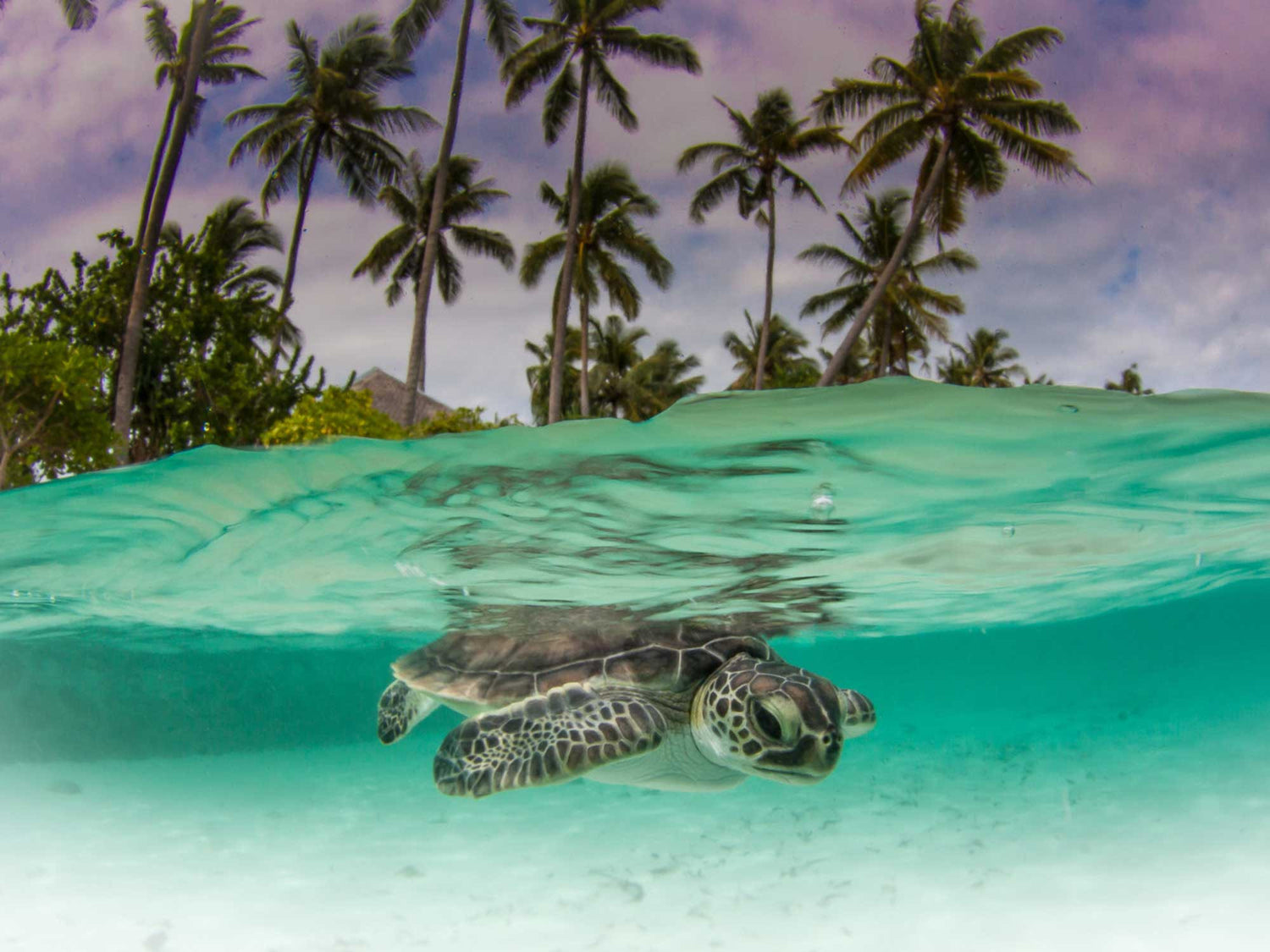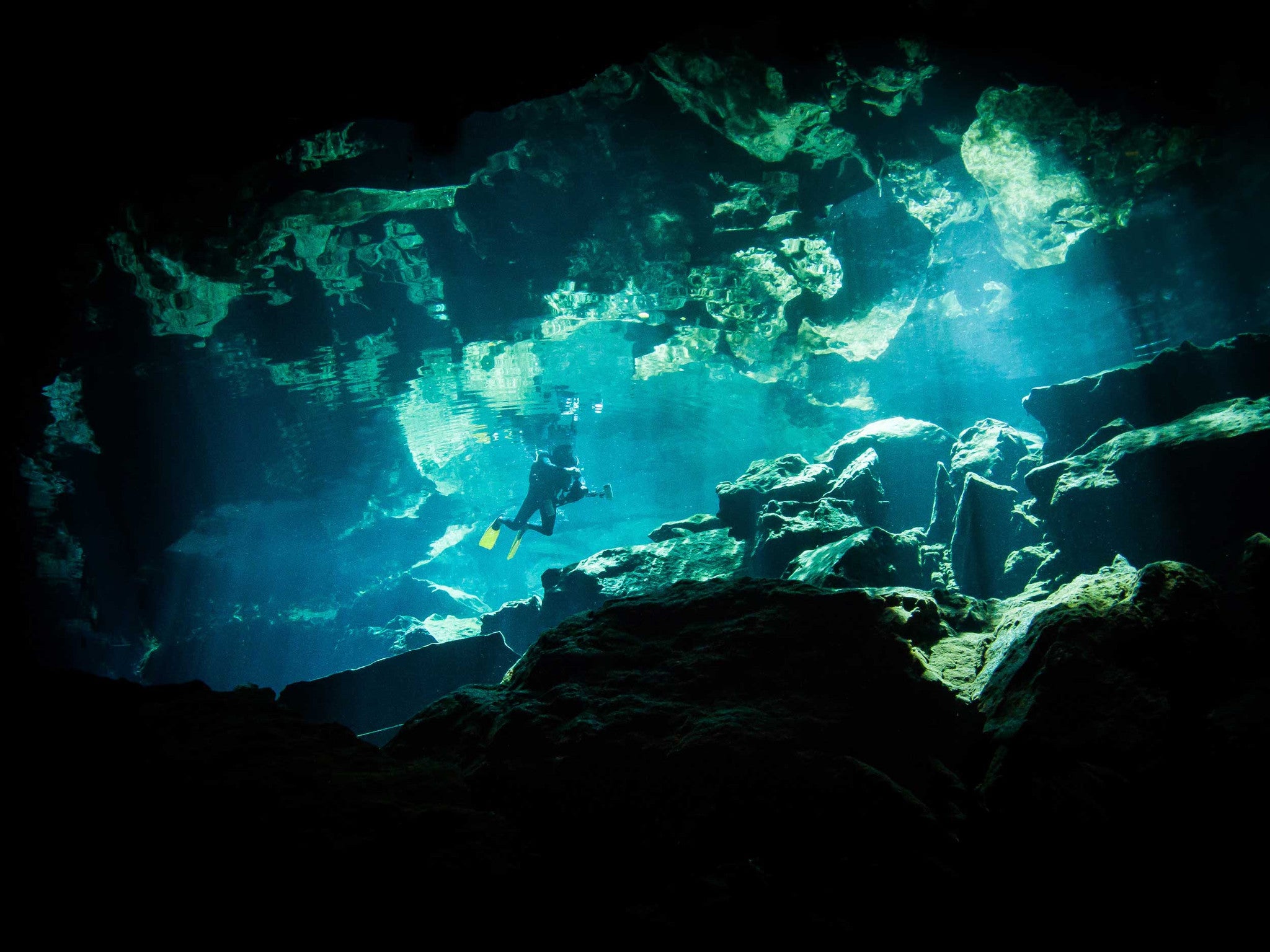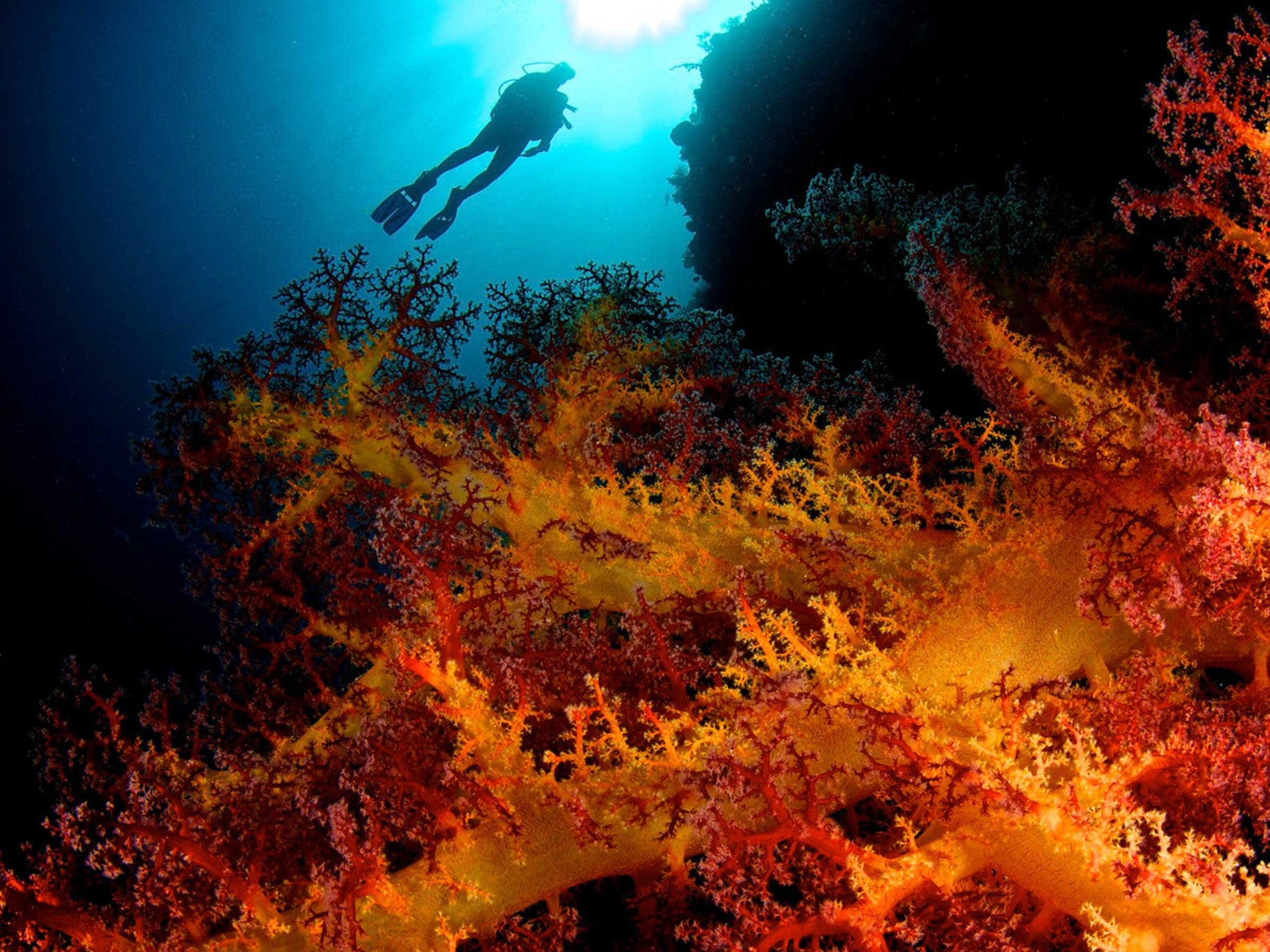The perspective in an image shot with your dome port half submerged provides a sense of scale that is unique. These photographs really draw the viewer in because they combine the more familiar topside view with a sneak peek of what lies beneath the water line.
These are engaging whether your subjects are in fresh or salt water; big animals, models, wrecks, you name it! Get creative and look for shallow waters around you for some really unique landscape and cityscape photography. Check out Alex Voyer's images (Instagram @alexvoyer_fisheye) for some inspiration.
Sometimes called over-unders, splits, or half-in, half-out, many photographers consider these the most difficult category of wide angle images to capture.
Where
Anywhere there's water!
DSLR + Mirrorless
ISO: 200 to 400
Mode: M Manual
Aperture: f/11 to f/16
Shutter Speed: 1/125 to 1/160
Point + Shoot
ISO: 200 to 400
Mode: M Manual
Aperture: f/11 (or smallest available)
Shutter Speed: 1/125
Technique
A wide angle or fisheye lens with a dome port is essential. Find the right exposure settings first, then work on your composition. If the water is shallow enough to stand, try sighting over the top of the housing so that you can see the front of the dome. The water in even the calmest of seas will lap across your dome, so timing of the shutter coincides with the moment the water line is close to level and in the middle of the dome.
Some photographers find that spitting on the front of the dome can help to reduce water droplets, similar to how it helps your mask to keep from fogging up.
Strobes
Strobes are not necessary, but can help to balance the brighter top portion of the frame with the underwater portion. Keep the strobes pointed down into the water at an angle and positioned as far from the lens as possible to reduce backscatter.
Additional Reading
Behind the Shot: DEEP Indonesia Best of Show Over-Under













